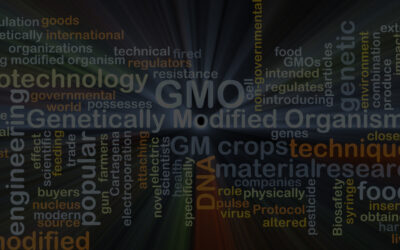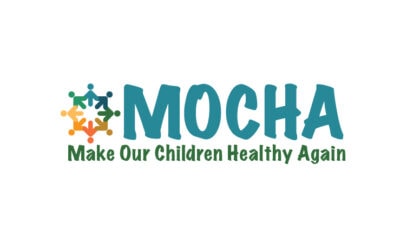GMOScience Editorial mini review on the recent publication:
Novel strategies and new tools to curtail the health effects of pesticides; Benbrook C, et al. Environmental Health: volume 20, Article number: 87; 2021.
Despite decades of research in the area of pesticides and human-health risks, gaps persist between usage, environmental damage, health impacts and state regulators (such as the EPA). Pesticide applications involve many agencies and individuals stemming from farmers, ranchers, foresters, landscapers, groundskeepers, schools and from individuals in private homes.
As usage and reliance of pesticides continues on a constant upward trend in most conventional farms both in the US and abroad, little time and money is invested by scientists in the EPA working to advance the accuracy of pesticide risk assessment. For example, Dr. Ruth Etzel, former director of the EPA’s Office of Children’s Health Protection (OCHP), filed a complaint against the agency accusing them of failing to protect children from environmental toxicants while focusing instead on corporate interests. Dr. Etzel has faced retaliation and her case against the EPA is presently being heard. Dr. Etzel is among five current or former EPA scientists who have alleged a range of complicity of the EPA with industry despite those relationships clearly placing the public at harm.
Another thorn in the side of the EPA occurred in 2007 over its failure to adhere to the Food Quality Protection Act (FQPA) in the case of chlorpyrifos. After years of legal battles, the Ninth Circuit Court of Appeals filed in favor of a consortium of advocacy groups for health, farmworkers, child and environmental protection organizers. The decision has come up under review presently under President Biden’s administration. The concern is that pesticide registrants will continue with their influence and stronghold over the science of pesticide risk assessments.
A prominent example of lack of a regulation is the glaring environmental disaster of glyphosate; the active ingredient in the Roundup herbicides. Due to a lack of oversight, high-risk application scenarios have persisted leading to dangerous exposures and off-label applications. There are ongoing legal battles over the role of glyphosate and cancer, particularly non-Hodgkin’s lymphoma. The failure of the EPA and the parent company of Monsanto, Bayer, to provide sufficient warnings and safety requirements on their products led to countless present and foreseeable future preventable health crises.
In the follow-up book to Whitewashed by scientific journalist Carey Gillam, The Monsanto Papers, author Gillam takes on Monsanto for its continuing distribution of Roundup despite known risks of glyphosate-based herbicides. The deceptive practices of Monsanto were horrific, but what was more appalling was the relationship between Monsanto and the EPA, laid out in the EPA’s employees’ own words. The process by which corporations build their strategy on corrupt regulatory agencies is meticulously researched in this compelling account.
Science should not be for sale. A recent publication in Comprehensive Reviews in Food Science and Food Safety concluded that “…Exposures to glyphosate from food are well below the amount that can be ingested over a lifetime with a reasonable certainty of no harm.” A possible intent by the authors of this study is to create a false sense of security regarding ingesting disease-promoting herbicides. They go to state that global regulatory authorities (which?) have spent decades reviewing practices to create a safe food supply. The authors opine that more is needed to demystify the regular processes established to ensure food safety. However, the reader has to go no further than the authors’ links to find that they are all employees of Bayer Crop Science, the major producer of glyphosate. In our study, we review the flaws in regulation and propose the methods to repair a broken system. What is clear is that scientific literature on pesticide safety must be conducted by unbiased researchers not tied to industry.
The business of pesticide regulation is not an easy matter. Many factors must be addressed such as where and how pesticides are applied, amounts applied and in what form and whether these levels are accumulating in soil, water and individuals. There are many studies that have now documented that there are more vulnerable populations such as pregnant women and children whose needs should be a top priority, but are grossly under-recognized or ignored.
Recently published in August, 2021, scientists, physicians and researchers combined their knowledge and strategized on the steps necessary to do better to tackle this issue of regulatory neglect mentioned previously. In Novel Strategies and New Tools to Curtail the Health Effects of Pesticides, a summary of four of the major principles to correct this profound deficiency in pesticide oversight are summarized below:
First
Scientists working on behalf of pesticide risk assessments must be independent from pesticide manufacturers. The costs of this work should fall to public research institutions and paid for via pesticide registration fees. There is no role for industry or the private sector in terms of assessing pesticide risks and their role in public health.
Second
In order to provide real-time pesticide exposures, it behooves the government to systematically survey pesticide levels in individuals. This data would provide a better understanding of human exposures and hence, true risks.
Third
There are contradictory actions occurring as science has clearly demonstrated how exposure to pesticides creates adverse health effects. On one hand, both regulators and the pesticide manufactures called for the need for a more profound understanding on the mechanistic action of pesticide toxicity. On the other hand, scientists have provided that information and the pesticide industry argues that these cutting edge scientific research methods are not ready to support regulatory decision making. These contradictions and biases are unacceptable ploys to negate real change. Our commentary in the full paper explains the how and why, as well as offering pragmatic steps regulatory agencies can implement immediately.
Fourth
There has been prodigious scientific advancement in our understanding of the effects of pesticides on health via metabolomics. Genomic research is furthering our understanding on how the damage occurs. These impairments have profound effects on fetal development and can impact neurodevelopmental processes, contributing to the global escalation of neurocognitive dysfunction in children such as autism spectrum disorder (ASD) and ADHD.
Advances in epidemiology can be accelerated through direct measures of exposure in people. This type of analysis is presently being performed in The Heartland Study, coupled with the identification of new markers of disease from genomics research. The HHRA is in collaboration with scientists from King’s College in London supporting these scientific breakthroughs.
There is clear evidence that there is an urgent need for pesticide risk-assessment science to update their methodology, data requirements and reviews in order to integrate the newest scientific information and tools from multiple disciplines. The authors of this paper call on regulators, industry as well as the scientific and medical communities to fix the broken regulatory system and their shortcomings in how pesticide use and risks are studied and regulated. Real reforms are necessary and overdue. Simple and effective changes create big differences by identifying and reducing those uses of pesticides that are causing harm to not only vulnerable populations, but our overburdened ecosystem.



